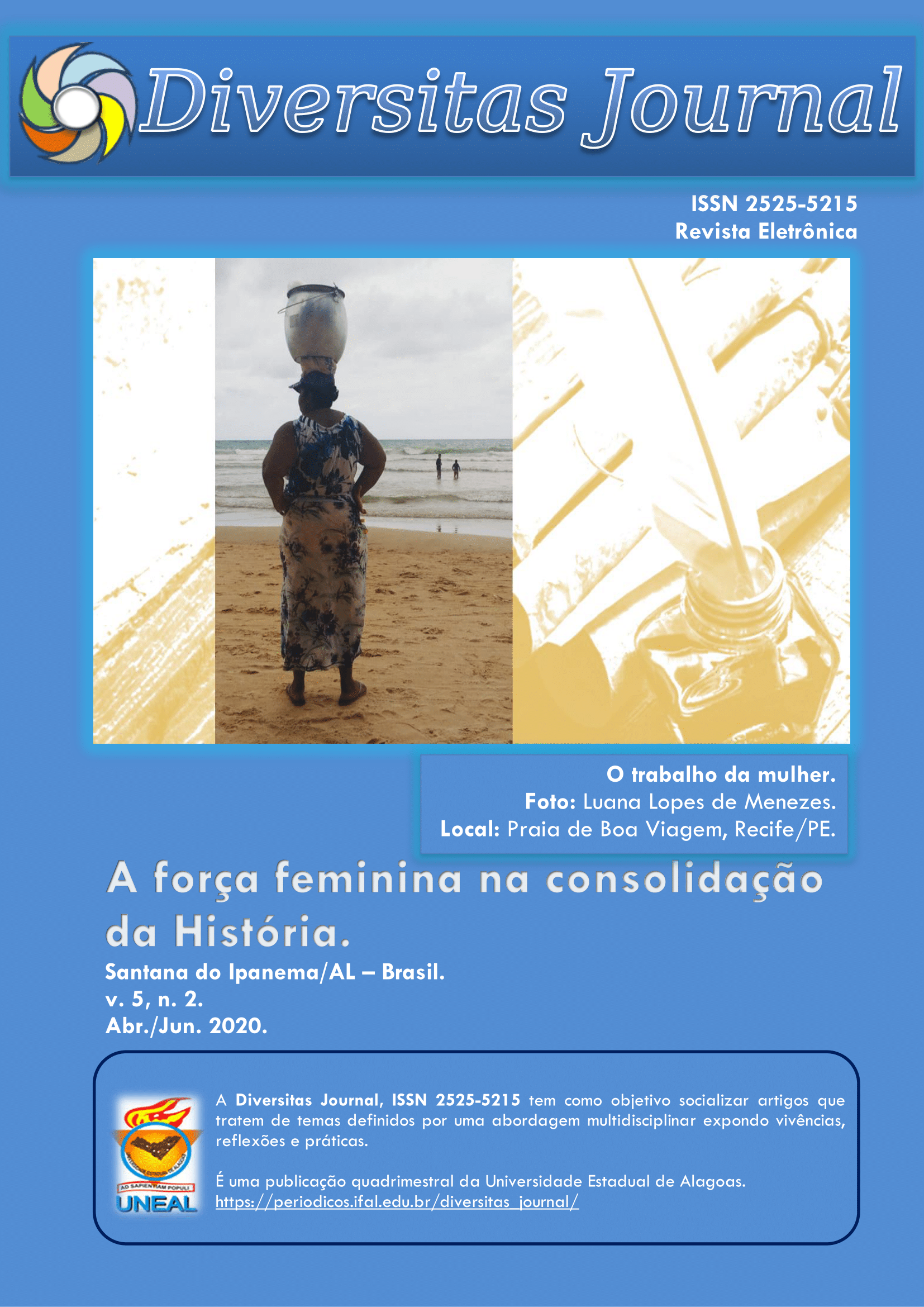Population diversity of insects in cowpea (Vigna unguiculata L., Fabaceae) crop
DOI:
https://doi.org/10.17648/diversitas-journal-v5i2-828Abstract
ABSTRACT: Cowpea is a grain widely consumed in Brazil, especially in the North and Northeast. The objective of this study was to know the diversity indexes of entomofauna in cowpea (Vigna unguiculata L.) crop using colored traps. The study was carried out in a cowpea crop in the wild region of Alagoas from July 2017 to August 2018. The experimental design was completely randomized with six treatments (A, yellow - PET trap, B, blue - PET trap, C, PET trap - white, D, PET trap - green, E, PET trap - red and F, PET trap - without color) and five repetitions (collections). The insects were collected weekly, after collected, were stored in pots containing 70% alcohol, their screening and identification were performed in the laboratory of the State University of Alagoas. The analysis of the diversity indices of the collected insect families was acquired through the DivEs software, which verified the indices, diversity (Shannon-Wiener, Brillouin and Menhinick), richness (Margalef and Chao 1), dominance (Simpson and Berger- Parker), and equity or evenness (Pielou). With the obtained results, it was found the presence of 9,630 insects in cowpea crop, represented by six orders and distributed in 30 families. Coleoptera (12) families, Diptera (10), Hemiptera (3), Hymenoptera (1), Lepidoptera (3) and Mantodea (1). Therefore, through the diversity indices obtained in this study, the use of colored PET traps in cowpea culture was efficient to know the insect diversity of this crop.
KEYWORD: Biodiversity, Occurrence, Injuries.
Metrics
Downloads
Published
How to Cite
Issue
Section
License
Copyright (c) 2020 Eliane dos Santos, Tamara Taís dos Santos, Joice Kessia Barbosa dos Santos, Aleyres Bispo Chagas, Diego Jorge da Silva, Rubens Pessoa de Barros

This work is licensed under a Creative Commons Attribution 4.0 International License.
The Diversitas Journal expresses that the articles are the sole responsibility of the Authors, who are familiar with Brazilian and international legislation.
Articles are peer-reviewed and care should be taken to warn of the possible incidence of plagiarism. However, plagiarism is an indisputable action by the authors.
The violation of copyright is a crime, provided for in article 184 of the Brazilian Penal Code: “Art. 184 Violating copyright and related rights: Penalty - detention, from 3 (three) months to 1 (one) year, or fine. § 1 If the violation consists of total or partial reproduction, for the purpose of direct or indirect profit, by any means or process, of intellectual work, interpretation, performance or phonogram, without the express authorization of the author, the performer, the producer , as the case may be, or whoever represents them: Penalty - imprisonment, from 2 (two) to 4 (four) years, and a fine. ”


















